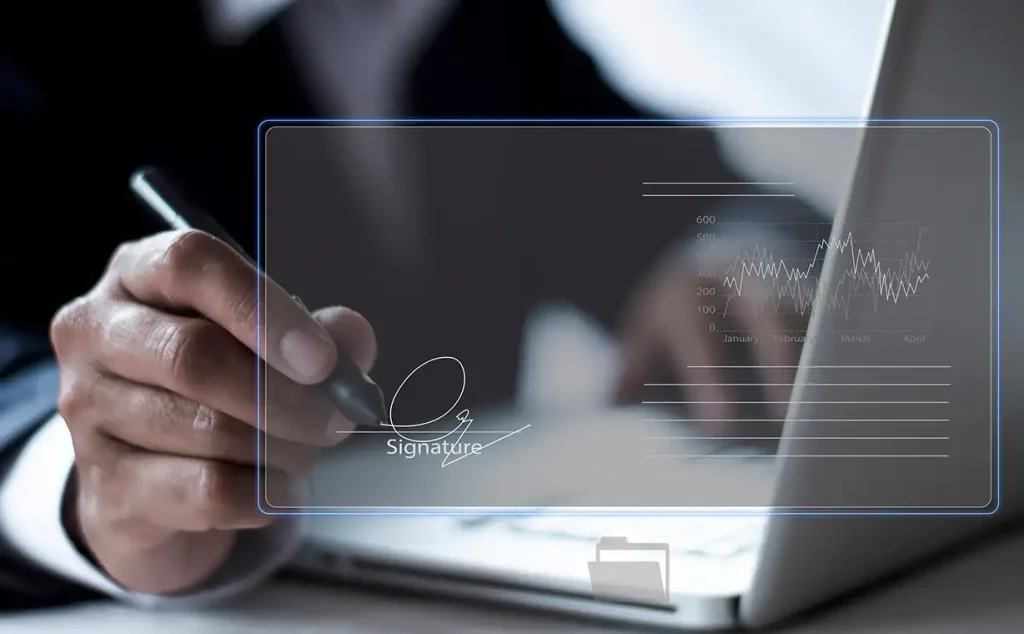When talking about procedures with the Spanish tax authorities, many fears that a bureaucratic tangle will end up making it impossible to complete them. Nothing could be further from the truth. Nowadays, tax procedures are much easier thanks to the online world. How does the digital signature contribute to this?
It is no longer necessary to spend almost a whole day dealing with your tax obligations. We can do this from home, from work, while using public transport, etc. All this thanks to both the electronic administration and private entities such as with Viafirma, which offers very useful tools in this aspect.
In this article we will talk about the digital signature options the Spanish Spanish tax authorities presents us, as well as both the digitization on the national scene and the role of Viafirma.
Electronic Administration in Spain
E-administration involves the use of digital signatures for procedures with the Spanish tax authorities and it’s designed to achieve a considerable degree of mobility when carrying out certain procedures.
Digitization of the Spanish tax authorities procedures have contributed, among other actions, to place Spain in a privileged position regarding the degree of development of its electronic administration.
In Fact, according to the research Challenges of e-Government in the European Union: Beyond 2020, carried out byOfficial Association of Administrative Agents of Madrid, Spain is ranked fourth within EU countries, behind Finland, Estonia and Denmark
The main challenges of this study are to make progress in open government, interoperability, bridging the digital divide and prevent dehumanization in citizens
It also highlights the fact of considering public workers as drivers to achieve a Single European Digital Market.

Access methods and procedures of the Spanish tax authorities
The Spanish tax authorities offer several ways for citizens, individuals and companies to access their online services, avoiding both long waits and office visits.
Among the procedures we highlight the following:
- Access to fiscal data
- Tax returns
- Access to notifications
- Payments
- Requesting certifications
- Information returns
- Quarterly or Monthly self-Assessments
- Draft of the tax return
- Annual personal Income Tax
- Tax certificates
- Request advance payments depending on different family conditions
- Make an appointment
- Get tax Return transcript via Renta WEB system
- File personal Income Tax
These identification methods include:
Digital certificate or electronic ID Card
Whether you have a digital certificate or an electronic ID card (which includes an electronic certificate) used for verifying your identity, the procedures accessible through the Spanish tax authorities website are vast and varied.
Cl@ve PIN
This method of identification consists of a key the user chooses and a PIN number that is sent to the phone by SMS. You must first register to access Cl@ve PIN.
Reference Number
Used for the Income Tax Season, to obtain it, please check box 475 of the Tax Return. The validity or issued date of the ID will be requested, as well as the support number of NIE.
Others
Although these are the main ways to access the electronic procedures proposed by the Spanish tax authorities, we should also highlight others such as identification through a personal income tax box or the use of the Secure Verification Code (CSV) to view or download certain specific files.
Viafirma solutions to fulfill the procedures with the Spanish tax authorities
Viafirma solutions provide a great advantage when carrying out procedures with the tax authorities, providing efficiency and security. Here, we must mention the presence of Viafirma, which allows the storage and management of digital certificates in the cloud.
Viafirma strictly complies with our principle of universal signature. This allows to identify and sign documents from any device, regardless of the model or operating system.
Furthermore, as these are stored in the cloud, the certificates may be freely used regardless of the computer, mobile or tablet, thereby contributing to mobility.
But that’s not all. It is worth noting the strong security measures that this solution incorporates, especially in the case of tax information.
Besides complying with the current eIDAS Regulation, Viafirma includes identity robust authentication, requesting, at least, the two-factor authentication. These can be classified in:
- Something the user knows (password)
- Something the user has: key card, SMS token, OTP code
- Something the user is or does: biometric factors
Thanks to the Internet and new technologies the way we relate to the Tax Office has changed a lot. Long gone are the days when you needed to wait for your turn with a pile of documents and a calculator for your tax returns.
Now everything can be done from home with a few mouse clicks. The Spanish Administration have put a lot of effort into this and they have brought positive results.
From Viafirma, we have also wanted to contribute in the process of making tax digital, developing means to both speed up and improve the security of the identification and signature processes.
